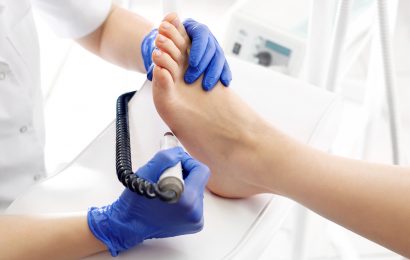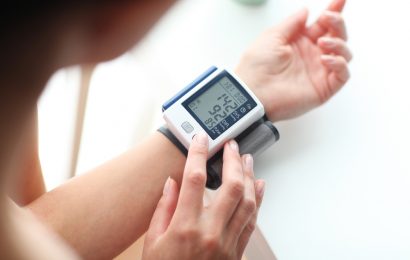Pain is a part of the body’s magic.
It is the way the body transmits a sign
to the brain that something is wrong.
—Norman Cousins
Neuropathy is an abnormality anywhere in a nerve pathway that disrupts nerve signals, causing the brain to misinterpret feelings or sensations. Different types of neuropathy go by different names, depending on the number of nerves affected, their function, and where in the body they are located.
Peripheral neuropathy is the name for nerve damage that causes malfunction of the peripheral nerves – the nerves that go to the arms, hands, legs, and feet. Damage to a single peripheral nerve is called mononeuropathy. If the damage is in two or more nerves, it is called multiple mononeuropathy. If damage occurs to many nerves simultaneously in the peripheral nervous system, it is called polyneuropathy.
Diabetes is associated with several types of neuropathy, including chronic polyneuropathy. Chronic polyneuropathy occurs slowly, often over months or years, and usually begins in the feet and hands.
Peripheral neuropathy
There are over a hundred types of peripheral neuropathy, each of which has a characteristic set of symptoms and pattern of development. The type of nerve damaged determines what symptoms are experienced and what effect the damage has on physical functioning. Peripheral neuropathy can be inherited, or it can be acquired. Acquired peripheral neuropathy is usually caused by physical injury to the nerve, tumors, deficiencies in nutrition, alcoholism, or vascular (blood vessel) disease. Neuropathy can also be acquired from toxins produced, for example, by certain bacteria or by some types of cancer. In addition, metabolic disorders such as diabetes can contribute to the development of peripheral neuropathy.
If you have damage to your peripheral nerves, you might not be able to feel pain, heat, or cold normally in your arms, hands, legs, and feet. In some people, peripheral neuropathy can make these body parts feel numb. Other people say they feel shooting pains, electrical-shock—like sensations, burning, tingling, or a feeling of being pricked by pins. These feelings are often worse at night and can interfere with sleep. While the sensations can occur on just one side of the body, most of the time they occur on both sides – in both feet or both hands, for example.
Sometimes peripheral nerve damage leads to changes in the shape of the feet. The muscles in the feet weaken, while the tendons in the feet get shorter. In this case, a health-care provider may prescribe special shoes or shoe inserts to help protect the feet.
Medicare and other health insurance programs may pay for shoes that are prescribed by your health-care provider. Your health-care provider or diabetes educator can help you find out how and where to get such shoes.
About 50% of older individuals with Type 2 diabetes have diabetic peripheral neuropathy. Over the years, high blood glucose levels damage the blood vessels that bring oxygen to some nerves. High blood glucose can also hurt the coverings of the nerves. Damaged nerves may stop sending messages or, in some cases, send messages too slowly or at the wrong times, resulting in symptoms such as numbness or pain.
A diagnosis of diabetic peripheral neuropathy is made on the basis of symptoms and/or signs of peripheral nerve dysfunction in people with diabetes. However, since people with diabetes can develop neuropathy from other causes, it’s important to rule those out before concluding that diabetes is the cause. In its very early stages, diabetic peripheral neuropathy may cause no symptoms. But even without symptoms, its presence raises the risk for foot ulcers by 5% to 7%. (In contrast, a person who does not have neuropathy has a less than 1% annual risk for a foot ulcer.)
Painful symptoms occur in about 33% of people who have diabetic peripheral neuropathy. The good news is that the pain is usually treatable. The bad news is that not everyone receives treatment, sometimes because they never tell their health-care provider about the pain they are experiencing. If you feel pain, be sure to tell your health-care provider so you can get a proper diagnosis and talk about possible treatments. When you talk to your health-care provider, be sure to describe the location of the pain, the frequency with which you feel it, and its intensity or severity.
Risk factors
There are a number of things that place a person at increased risk for diabetic peripheral neuropathy. The older you are and the more years you have had diabetes, the higher your risk. Some other risk factors include frequent or chronic high blood glucose, high blood pressure, elevated cholesterol and triglyceride levels, and smoking. Some studies suggest that people with painful neuropathy tend to have higher glycosylated hemoglobin (HbA1c) levels, which means their average blood glucose level is high; greater fluctuations in blood glucose levels; and more episodes of hypoglycemia (low blood glucose).
A person’s risk of neuropathy can be lowered – by lowering blood glucose, blood pressure, blood cholesterol, and blood triglyceride levels to goal levels and by stopping smoking. Avoiding excessive alcohol consumption is also recommended for the prevention of diabetic peripheral neuropathy, as well as other complications of diabetes. If your HbA1c test results are over 7%, if your blood pressure is higher than 130/80 mm Hg, if your low-density lipoprotein (LDL) cholesterol is over 100 mg/dl, or if your level of triglycerides is over 150 mg/dl, ask your doctor what steps you can take to lower these numbers. Your doctor should also be able to help you learn to prevent frequent episodes of hypoglycemia, stop smoking, and get help for excessive drinking.
Screening
Everyone with Type 2 diabetes should be screened for diabetic peripheral neuropathy at the time of their diabetes diagnosis and then routinely thereafter. People with Type 1 diabetes should be screened within five years of their diabetes diagnosis and at least annually thereafter.
There are several ways of checking the sensory function in your feet, including checking your response to very gentle pressure on the bottoms of your feet with a device called a monofilament tool, and checking your perception of vibration using a tuning fork. Your health-care provider should also ask you about any symptoms of neuropathy that you may have (such as tingling or numbness) as well as examine your feet and legs for ulcers, calluses, and any deformities. Your footwear should be inspected at each diabetes care visit for signs of abnormal pressure in the shoes or signs that your shoes are too small.
Everyone with diabetic peripheral neuropathy, whether it causes symptoms or not, should be educated on proper foot care, as described in “Basic Foot Care.” Following these tips can help you prevent foot ulcers or get them treated early if they develop. If your health-care provider deems it necessary, he may refer you to a podiatrist (foot doctor) for further care.
Treatment options
Treating diabetic neuropathy almost always involves some trial and error. Not all therapies relieve pain for everyone, so often, several therapies must be tried before one – or a combination – is found that adequately reduces pain.
Nondrug therapies. Your health-care provider may refer you to a physical therapist for treatment of diabetic neuropathy. Physical therapists have numerous tools and methods to promote ease of movement, reduce pain, restore function, and prevent disability. Treatment of neurological conditions typically includes exercises to restore motor function.
Functional electrical stimulation (FES) is a technique that uses electrical currents to activate nerves in the extremities. This can sometimes restore function in people with neurological disabilities such as diabetic peripheral neuropathy.
Monochromatic infrared energy (MIRE) therapy, most commonly known as Anodyne therapy, uses infrared energy to increase the amount of nitric oxide in the blood and in that way increase blood circulation. In some cases, MIRE has been shown to decrease numbness and pain caused by peripheral neuropathy.
Another option that may be considered to relieve physical symptoms is acupuncture, which is believed to provide pain relief by stimulating the release of natural endorphins in the brain.
Use of any of these treatments should be based on the guidance and recommendation of your health-care provider.
Topical drug therapy. Your health-care provider may recommend that you try an ointment, cream, or patch containing capsaicin to ease your pain. Capsaicin is the chemical in hot peppers that makes them hot, and it relieves the pain of peripheral neuropathy by stimulating the release of substance P, a chemical transmitter of pain, from nerve terminals. Initially, the release of substance P causes pain, but eventually the nerve terminals become depleted of substance P, leading to loss of the pain sensation. Ointments, creams, and patches containing capsaicin are sold over the counter at drugstores. It may take two to four weeks of using topical capsaicin before you feel significant pain relief.
When applying capsaicin ointment or cream, it’s a good idea to wear disposable gloves to prevent getting it on your hands, and it’s important to avoid getting it on any part of the body except the affected part. Be especially careful not to touch your eyes or mucous membranes (such as those in your nose and mouth); if you do get it on these areas, it will cause a burning sensation. When using a capsaicin patch, apply it to the skin over the affected area, but do not put it on just before you bathe or exercise.
Lidocaine patches, sold by prescription under the brand names Lidoderm and Lidopain, are another topical therapy that may be used for peripheral neuropathy. They help decrease pain and can also lower the amount of analgesics (such as aspirin or acetaminophen) a person needs to take to control pain. Up to three patches may be applied at once for 12 hours at a time in any 24-hour period.
Surgery. When nerve pain is caused by pressure on the nerve, a type of plastic surgery called nerve decompression surgery may help.
Oral drug therapy. Many people with diabetes require drug treatment to control the painful symptoms of neuropathy. Some of the drugs commonly used for this purpose are specifically approved for managing painful diabetic peripheral neuropathy, while others are not. In recent years, two drugs, duloxetine (brand name Cymbalta) and pregabalin (Lyrica) have received approval by the Food and Drug Administration (FDA) for the treatment of diabetic peripheral neuropathy. Drugs not specifically approved for relief of painful diabetic peripheral neuropathy but commonly used “off label” include some antidepressants, some anticonvulsants (seizure medicines), and certain opioids, which act as pain relievers. You and your health-care provider should discuss the pros and cons of using off-label drugs for pain relief.
Anytime you are having pain with diabetic peripheral neuropathy, talk with your health-care provider about the options available.
Using the body’s magic
While pain is by definition unpleasant, it is also useful, in the sense that it draws attention to a medical problem, and diabetic peripheral neuropathy is no exception. No matter how minimal it seems, report any pain or unusual feelings or sensations to your health-care provider. Keep in mind that just because you don’t have pain doesn’t necessarily mean that the nerves are healthy. To avoid nerve injury, take an active role by being attentive to the healthy lifestyle behaviors recommended by your health-care provider and diabetes educators. Talk with your health-care provider about any risks you may have and about developing an action plan for prevention and/or treatment. Above all, be your own advocate to make sure your feet are screened on a regular basis to determine any possible presence of diabetic peripheral neuropathy. By taking these necessary steps, you are “walking your way” to good health!





